
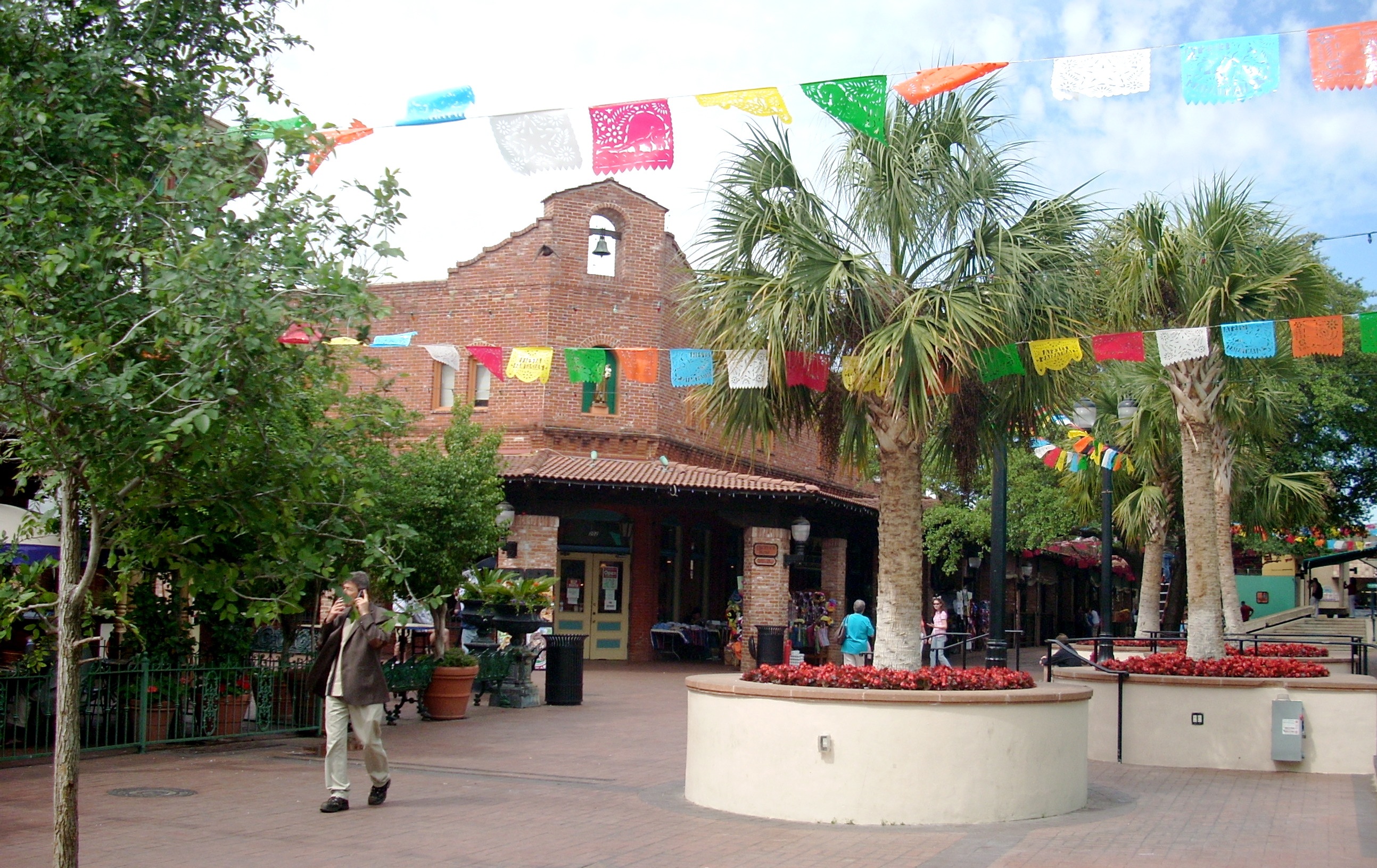
| Route 66 | Cities | Beaches |
 |
 |
Sea World |
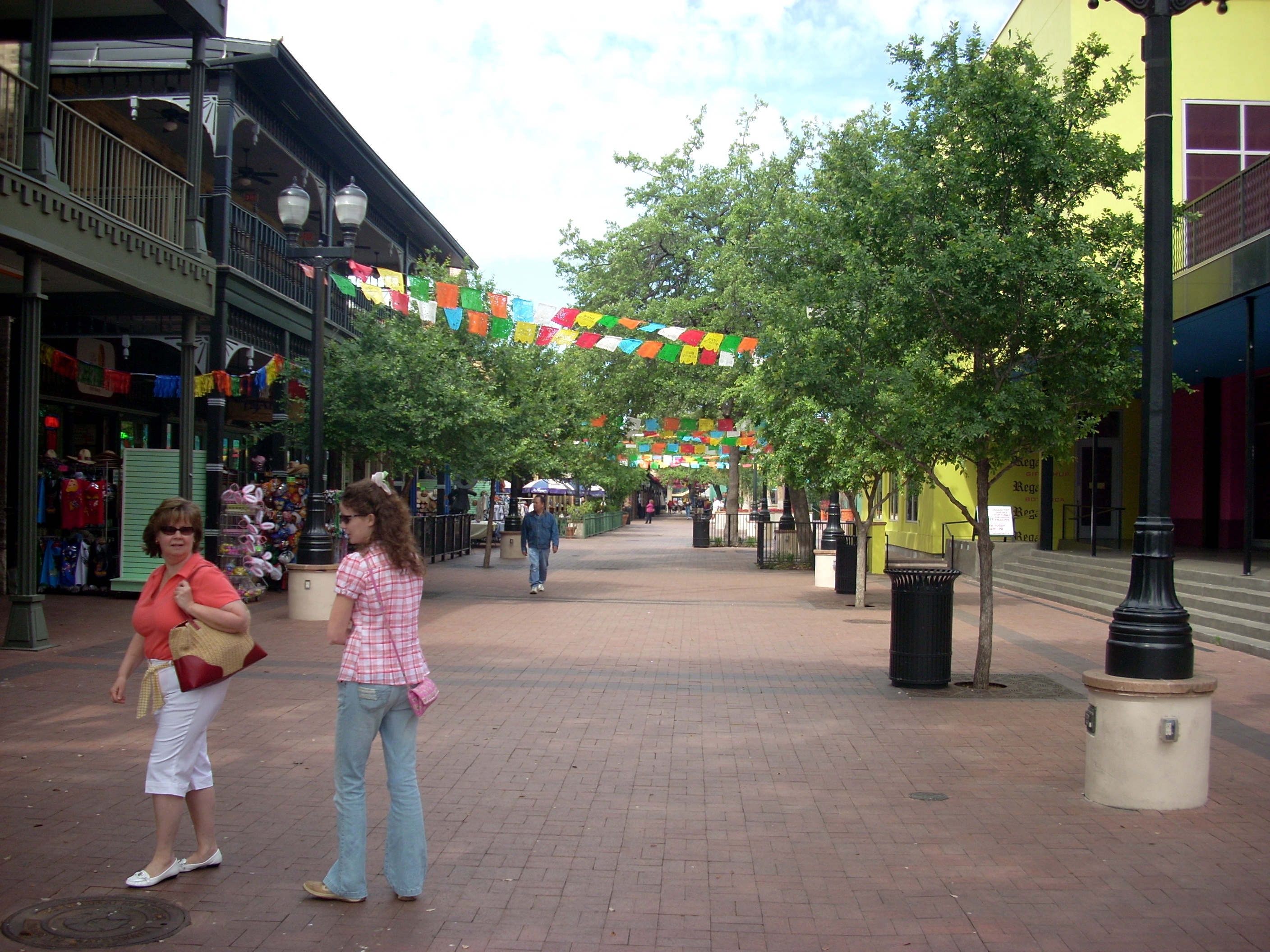 |
Like the Alamo and Riverwalk, the Mexican Marketplace is a Must Do on your San Antonio visit. In a world where even American flags and Navajo artifacts are made in China, here you can buy handmade pottery, baskets, jewelry, blankets, serapes and leather goods all made in Mexico and at surprisingly reasonable prices. The Marketplace, called El Mercado locally, is a comfortable walk from the Crockett. You go West on Commerce Street to the San Fernando Plaza, then drop one block south to Delores and follow it to the Marketplace. Wear comfortable shoes because you'll be on your feet all day except when you're eating lunch. El Mercado has been a continuous Mexican outdoor open stall marketplace since 1820. The photo above left is La Margarita restaurant on the first floor and La Jaiba Mexican Seafood Restaurant on the second. Above right is Mi Tierra Bakery, Restaurant and Bar. The photo at left looks down Produce Row, the plaza dividing the stores and restaurants at left and the 100 open stalls within the Mercado Building to the right, with the Farmers Market barely visible way in the back. |
| Halfway there, you'll come to the San Fernando Cathedral. Whether or not you're Catholic or even religious, you must stop here. We've been to the Old North and Old South churches in Boston, the National Cathedral in Washington, and the Mormon Tabernacle in Salt Lake City, and this may be the most historic and most impressive of all. This cathedral was built in 1738 by a delegation from the Canary Islands commissioned and financed by King Phillip V of Spain. The cathedral is named for King Ferdinand, who sponsored Columbus' trips to the New World. The cathedral, the outbuildings around it, and the plaza you see here have a Spanish feeling. This was not a mission. Missions served villages and neighborhoods. This cathedral was intended to serve a territory, a state, a nation. Had Spain kept the land west of the Mississippi, this would have been its capital. | 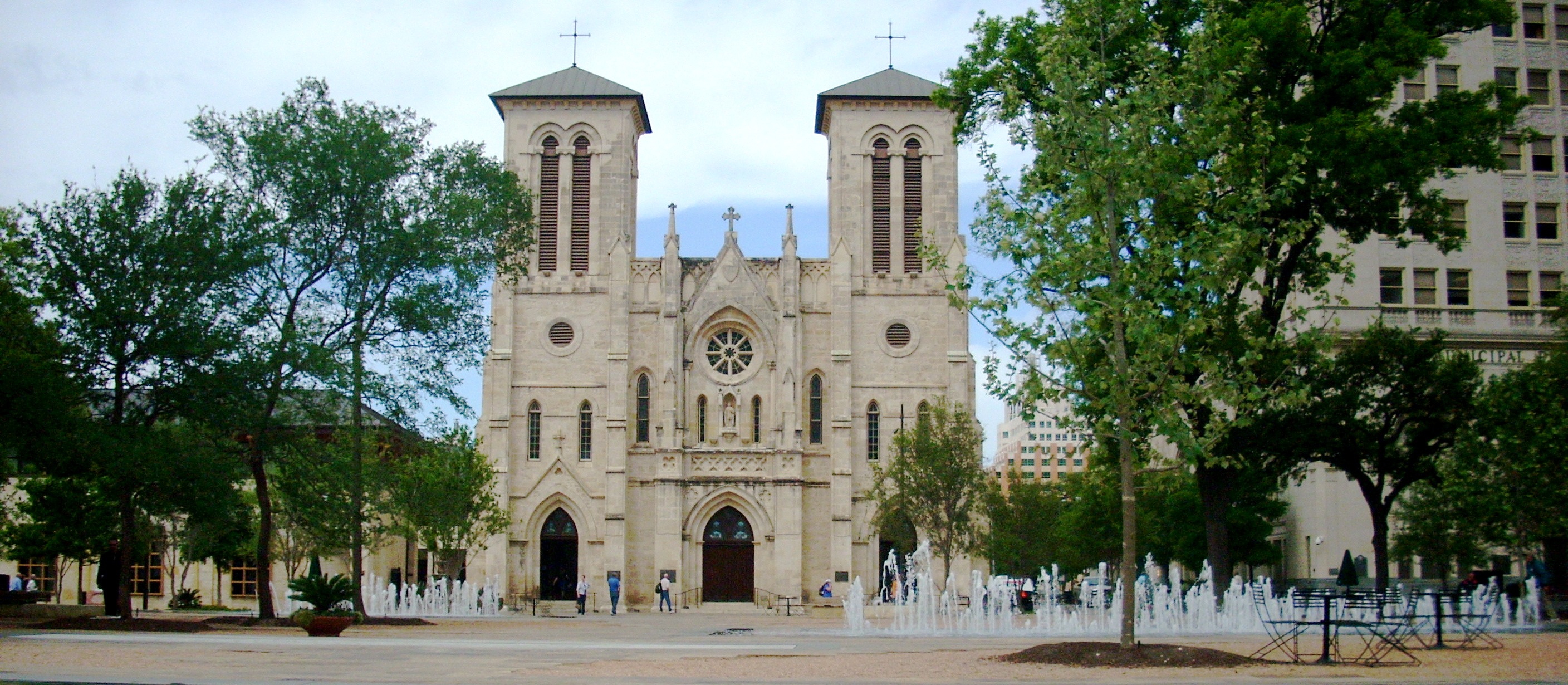 |
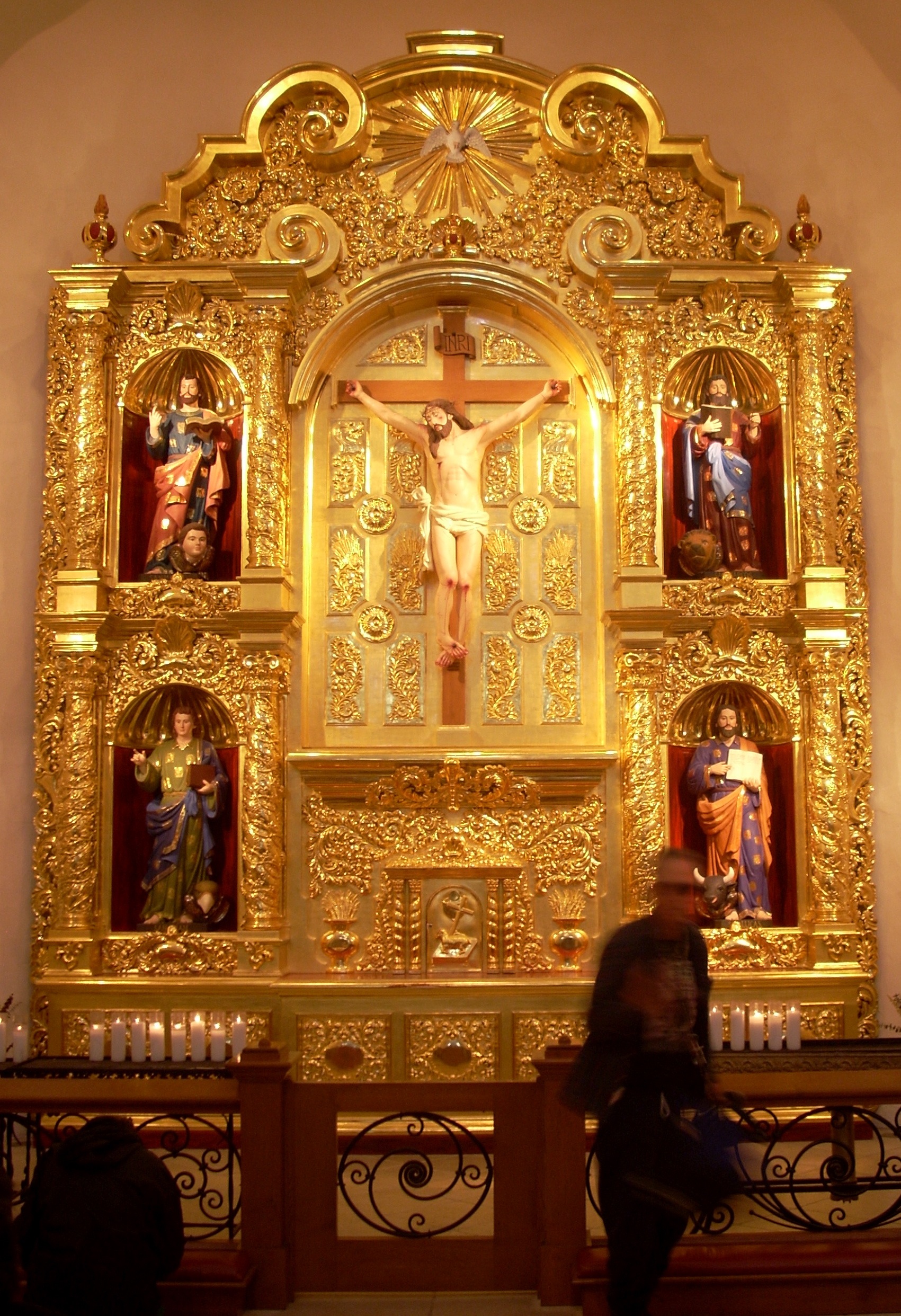 |
By comparison, the Alamo was merely a mission, intended to serve the people of La Villita, the village that grew up on the east bank of the river. The Archbishop, the priest in charge of the entire diocese, was at the cathedral. And today, the Archbishop of the San Antonio Diocese still is. This is not a historical monument. It is an active cathedral. There are Friday, Saturday and Sunday masses held in Spanish, English and bilingually. Weddings, funerals and baptisms are conducted. The four important feasts in the Spanish American calendar are celebrated here : el Dia de los Muertos (Day of the Dead), Posada (the pilgrimage of the Holy Family in search of lodging), the Feast of San Antonio of Padua, and the Feast of Our Lady of Guadalupe. Each Good Friday, the annual Passion Play is enacted on the plaza attended by 25,000 people. The furnishings of this cathedral are priceless. The Christ retablo shown at left was designed and cast in Mexico City by Leonardo Soto Recendiz. It is 24 feet high and 18 feet wide, gilded in 24 karat gold. It is flanked in alcoves on the right and left by two smaller retablos. This creates one of the most impressive altars in the Americas. But there's more. On the floor in front of the railing is embedded a circular marble compass which represents the precise center of the city of San Antonio. The famous statue of the Black Christ, El Christo Negro, was brought here to protect it from political upheaval in South America. It hangs in the rear of the church, and Catholics from all over Central and South America send it candles, pictures and notes to petition God for help or thank God for favors received. The painting of Our Lady of Guadalupe, Mother of the Americas, celebrates the moment when the Virgin Mary appeared to Juan Diego and asked him to build a church in her honor. The Black Madonna was brought from the Canary Islands by the original Spaniards. The statue of St. Anthony of Padua honors the namesake of the city of San Antonio. Carved stone statues mark the Stations Of The Cross. The stained glass windows down the sides are the oldest in North America. The wooden statue of Our Lady of Candlemass pays homage to the patroness of the Canary Islands. The walls are the oldest standing structure west of the Mississippi. The stone carved baptismal font was a gift from King Charles III of Spain in 1759. It is a replica of the one in the Cathedral of Seville, dedicated in 1502. |
| When Santa Anna rode into the San Antone valley, the spires of the cathedral caught his immediate attention. As soon as he had established camp, he and his officers rode over. Santa Anna prayed inside, and returned to admonish his men that if one brick was hurt he would personally inflict a most painful death on the guilty party. After the two week siege, on the morning of the final battle, Santa Anna had the No Quarter flag hoisted at the cathedral and prayed for forgiveness. After the battle, he had the remains of the men burned so they would not be made heroes or martyrs of. But there were many Mexicans as well as Americans killed. The Mexicans from La Villitas carefully gathered the ashes and brought them to the priest for consecration and last rites. They were placed in a marble sarcophagus and buried beneath the altar lest Santa Anna return. In 1936 the sarcophagus was retrieved and placed on display in the vestibule. So this is the final resting place of the remains of Davy Crockett, Jim Bowie and Colonel Travis, along with their men. Santa Anna lays somewhere in Mexico in an unmarked grave. | 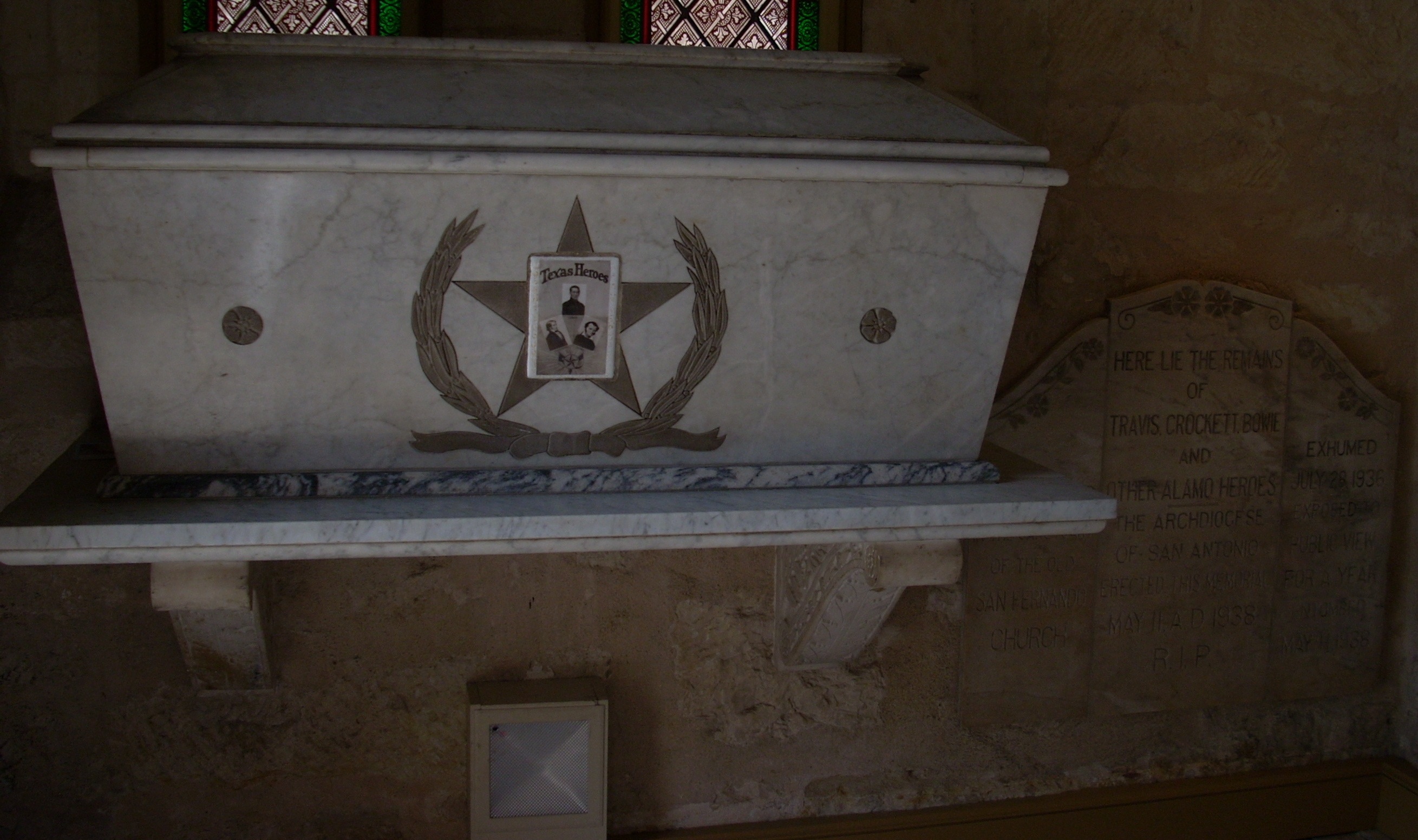 |
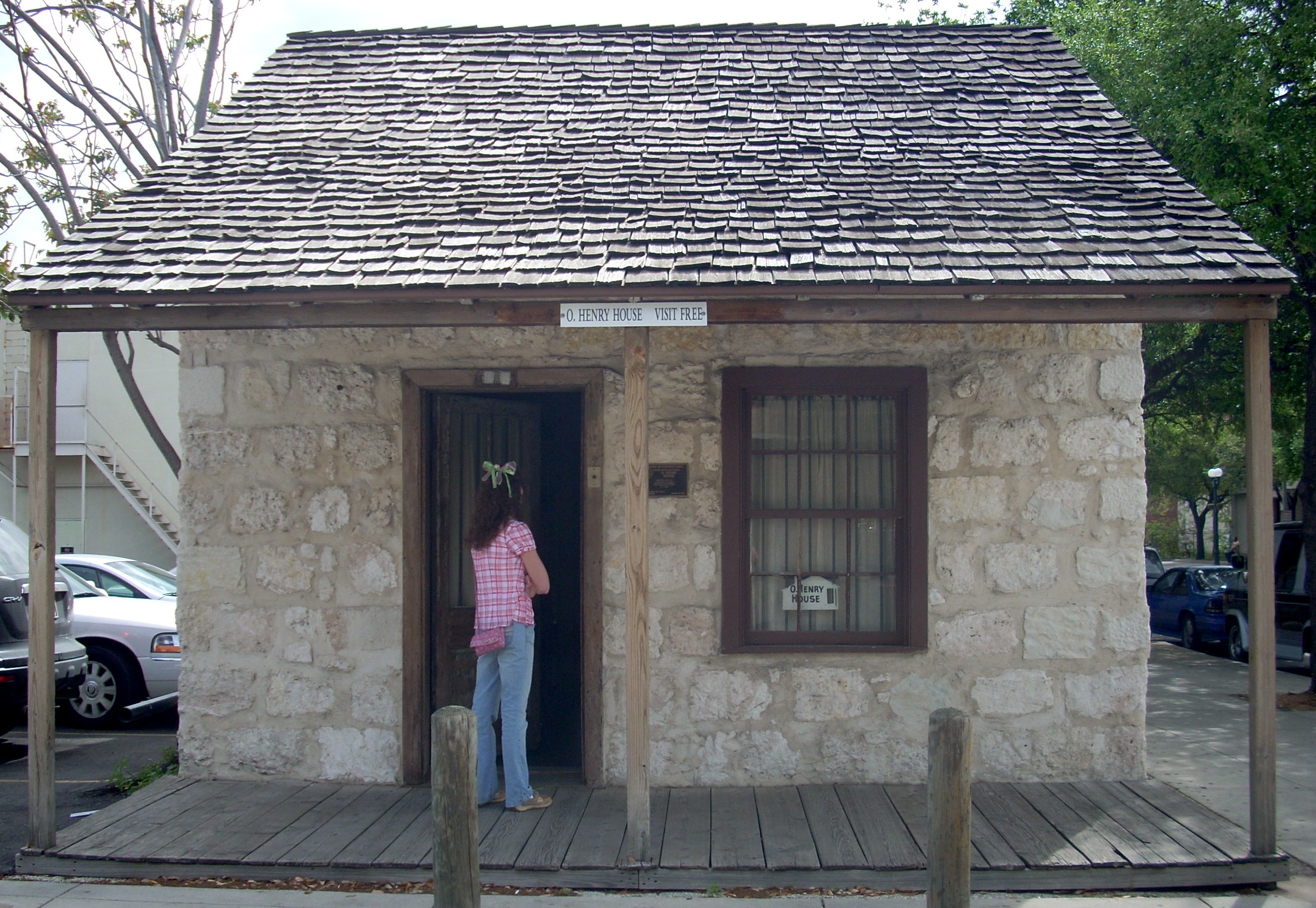 |
Leaving San Fernando Cathedral, we suggest you not return to Commerce Street, but walk to the southern edge of the plaza and head West on Dolorosa Street. Two blocks will bring you to the intersection of Dolorosa and Laredo Streets, where you will find a tiny two room stone structure. This is the O. Henry House. Actually, his real name was William Sidney Porter, but he signed his short stories O. Henry. Porter lived in this house in the 1890s, He gained national fame as a writer, and published the humorous weekly newspaper, The Rolling Stone, from this house. Although born and educated in North Carolina, O. Henry moved to Texas for health reasons. He first came to Houston, then Austin and finally San Antonio, but in between stays in these cities he also spent time on various ranches. In San Antonio, he hung out at the Menger Hotel lobby and bar and various other bars in town, observing cowboys, ranchers, Indians, merchants, and other characters. These were the foundation for his 300 short stories. He is recognized as one of America's finest writers, capturing snapshots of turn of the century Texas with precise wording, great characterization, accurate dialogue, humor, and an ironic twist at the end, which became his trademark. He eventually moved back East and died in 1910. |
| A block past the O. Henry House you come at last to the Mexican Marketplace. The first block of El Mercado features a wide pedestrian plaza down the middle (see third photo at top). To the left are a dozen stores and restaurants, the best of which is Los Pueblitos on the corner. To the right is a huge yellow building with two aisles and two crosswalks. 100 small stores line these aisles, peddling pottery, hats, blankets, toys, baskets, leather goods, clothing, belts, purses, wood carvings, and dozens of other items, all handmade in Mexico. Shop carefully. We suggest you work your way through the entire complex, then go back to the best places. Do not be put off by some of the tacky or garish items you'll come across in a few shops. There are quality goods at low prices if you patiently look for them. | 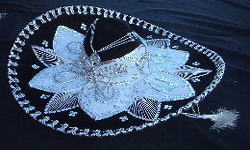 |
 |
Produce Row and the covered open stall marketplace occupy the first block of El Mercado. Back on the second block is a sprawling Farmers Market. Here is the best source of Mexican cooking supplies in South Texas. Locals come here for various kinds of chiles, but there are also vegetables and fruits. Among the more popular items with Americanos is Pure Vanilla. It's one of the most expensive items in the whole marketplace, about $20 for an eight ounce bottle. Mexican Chocolate is also popular. Although most of the items here are Mexican, there are also food items from Central and South America. The Tomato was a Central American plant when Columbus discovered it, and there are still varieties of Tomato common to Mexico and further South that are not usually seen in the U.S. These are more suited to salsas and sauces than slicing. These Tomatoes, the plants, and the seeds can be purchased here. Most interesting of these is Ixocarpa, popular in Mexico and south to Guatamala. Although a cousin to the tomato, Ixocarpa is actually a five foot tall semi-woody tree. It is an annual, so does not have to be replanted every Spring. The tomatoes are smaller, sort of a cross between a cherry and a Fourth of July. They grow with a husk around them, so are often called a Husk Tomato. |
| We recommend that you leave the Crockett or Menger just after breakfast, so after stopping at the cathedral and O. Henry House you arrive here sometime after 10. You can browse El Mercado for two hours. Then we recommend eating lunch along Produce Row. Our top recommendation is Mi Tierra, extensively reviewed in our Restaurants section. But there are two other excellent Mexican eateries on the plaza : La Jaiba, which specializes in Mexican seafood, and La Margarita, offering a more traditional Mexican menu plus a very talented Mariachi trio roaming from table to table. Both are excellent. However, if you choose not to take the time for a full lunch, you should still drop by Mi Tierra's Mexican Bakery for a snack before heading back to the Farmers Market. You can have Candied Sweet Potato, Mexican Chocolate, Mexican ice cream, flan, cheese cake or 50 other treats. If you're into food history, La Margarita introduced the Fajita to American restaurants. Mi Tierra and La Margarita are both owned by the Cortez family, who have operated them at this location since 1941. Regardless of whether you wander into Mi Tierra, La Margarita or La Jaiba, be prepared for an explosion of lights, colors, crowds and music. All three places look like 24 hour a day seven day a week parties. | 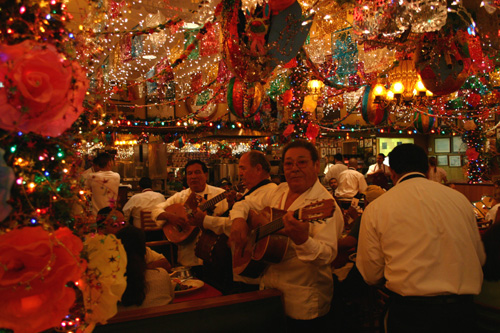 |
|
|||
|